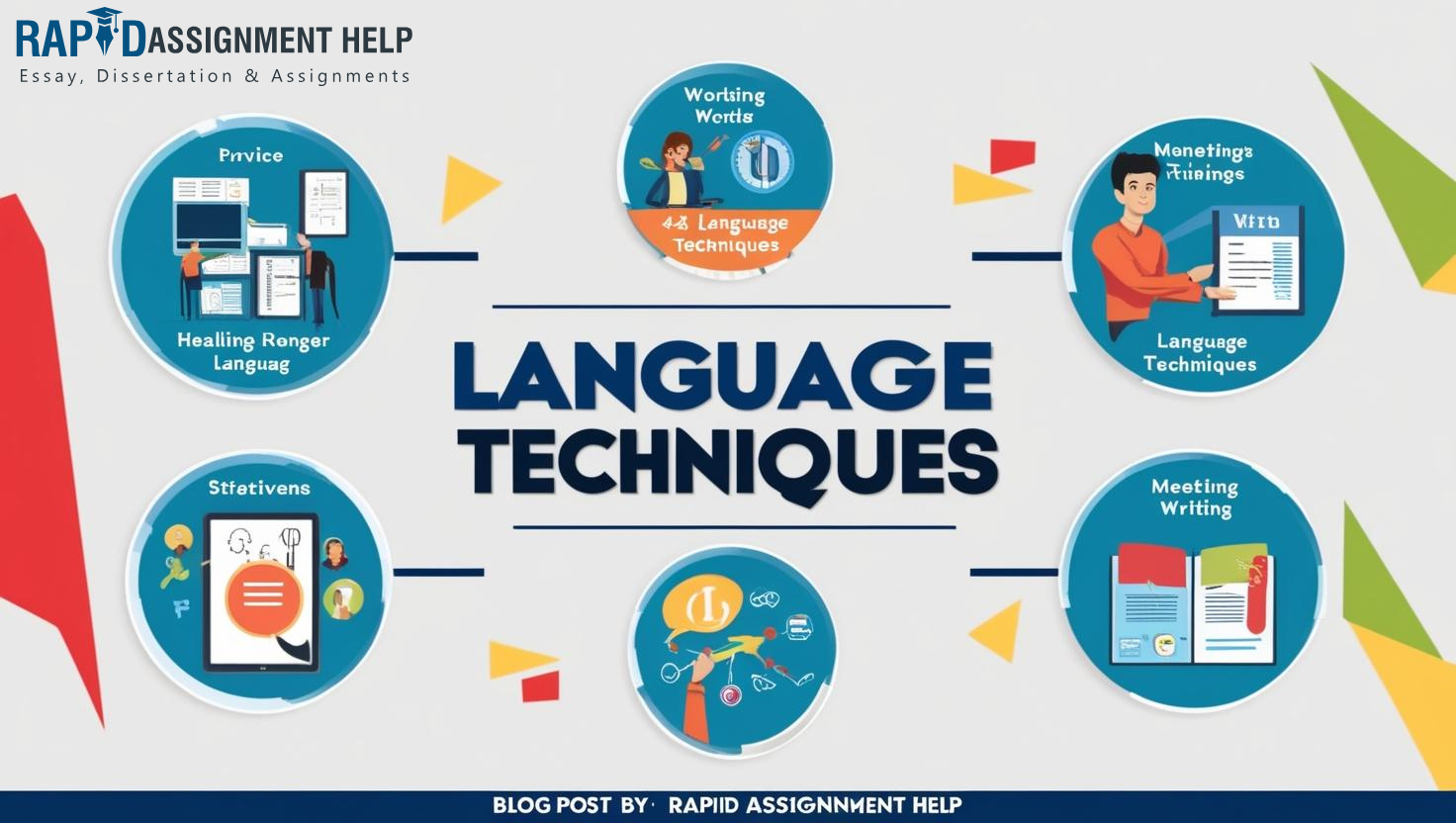Everyday English Language Techniques You Didn't Notice

Strong 8k brings an ultra-HD IPTV experience to your living room and your pocket.
Discover how everyday English language techniques subtly shape ads, conversations, and media—boost your awareness and communication skills today!
Introduction: The Hidden Power of Language
Whether we realize it or not, we encounter language techniques in almost every conversation, ad, tweet, or TV show. From catchy slogans to persuasive speeches, English Language Techniques are quietly working behind the scenes to shape how we understand and respond to messages. These tools aren’t just for essay writing or English exams—they're embedded in our everyday lives, influencing how we think, feel, and communicate. Recognizing them can help you become a more thoughtful reader, a persuasive speaker, and a sharper writer.
This article explores common yet often unnoticed language techniques in daily use, showing how they appear in places like social media, advertising, everyday conversations, and entertainment
1. Metaphor: More Than Just a Figure of Speech
A metaphor compares two unrelated things by saying one is the other, often creating vivid images or emotional effects. While we learn metaphors in school, we hear them constantly in everyday speech. Think of phrases like "time is money," "the world is a stage," or "he's a walking encyclopedia." They're everywhere!
Where you’ll hear it: In business meetings ("We need to think outside the box"), on social media ("That plot twist was a rollercoaster"), or even in weather reports ("A blanket of fog covered the city").
Why it matters: Metaphors help make complex ideas relatable and memorable. Spotting them can help you better understand tone, purpose, and underlying messages in both casual and formal language.
2. Hyperbole: Exaggeration for Emphasis
Hyperbole is exaggerated language used for effect or humor. You've definitely used or heard it: "I'm starving," "This bag weighs a ton," or "I've told you a million times."
Where you’ll hear it: In conversations, memes, customer reviews ("Best pizza ever!"), and YouTube thumbnails ("This changed my life").
Why it matters: Hyperboles grab attention and create emotional responses. In advertising and digital content, they help things stand out and seem urgent or exciting.
3. Irony: When Meaning and Reality Clash
Irony happens when what is said is the opposite of what is meant or expected. It's popular in sarcasm, comedy, and online comments. "Great, another Monday," or "Yeah, because THAT went well" are common ironic statements.
Where you’ll hear it: On social media, sitcoms, and even in the workplace. Irony helps people bond over shared experiences or highlight absurdity.
Why it matters: Understanding irony helps you interpret tone and humor. It also protects against miscommunication, especially in written forms like texts or tweets.
4. Alliteration: Sound That Sticks
Alliteration is the repetition of the same sound at the beginning of words. Marketers and poets love it because it's catchy: "Dunkin' Donuts," "PayPal," "busy bees."
Where you’ll hear it: In brand names, tongue twisters, slogans ("Reduce, Reuse, Recycle"), and news headlines.
Why it matters: Alliteration makes messages more memorable. Once you start listening for it, you’ll realize how often it's used to enhance recall and create rhythm.
5. Anecdote: Stories That Stick
An anecdote is a short, personal story told to illustrate a point. While we might not label it a "technique" in conversation, it's a powerful rhetorical tool.
Where you’ll hear it: In speeches, job interviews, blog posts, and TED Talks. For example, a speaker discussing climate change might open with a childhood memory of growing up near a forest.
Why it matters: Anecdotes make messages more relatable and human. They add emotion and authenticity, which can be more persuasive than facts alone.
Line to include: Even the smallest language choice can influence how a message is received and remembered.
6. Rhetorical Questions: Provoking Thought Without Asking
Rhetorical questions don't expect answers; they make the listener think. "Isn’t that incredible?" or "Who wouldn't want that?" are typical examples.
Where you’ll hear it: In sales pitches, political speeches, and casual chats. They nudge the audience to agree with the speaker's point.
Why it matters: Recognizing rhetorical questions helps you evaluate persuasive language and stay critical of arguments.
7. Repetition: Reinforcing the Message
Repetition is saying the same word or phrase multiple times to emphasize a point. Think "I have a dream" or "Location, location, location."
Where you’ll hear it: In speeches, protest chants, ads, and even in storytelling. Repetition builds rhythm and impact.
Why it matters: It creates emotional build-up and ensures the key message sticks in your mind.
8. Emotive Language: Triggering Feelings
Emotive language uses words that stir emotions like happiness, anger, or fear. For example, calling a policy "heartless" vs. "strict" changes how we feel about it.
Where you’ll hear it: In news articles, campaigns, social media, and fundraising appeals.
Why it matters: It can be powerful and manipulative. Spotting emotive words helps you separate facts from emotional persuasion.
9. Rule of Three: The Magic Number
The rule of three means listing three related elements for emphasis or style: "life, liberty, and the pursuit of happiness." There's something about triads that feels complete.
Where you’ll hear it: In marketing, speeches, books, and stand-up comedy. It creates rhythm and memorability.
Why it matters: This technique taps into how our brains process information. You’ll start noticing how often three-part structures are used to make points stronger.
10. Assonance and Consonance: Subtle Sound Patterns
Assonance is the repetition of vowel sounds; consonance is the repetition of consonant sounds. These often go unnoticed but create musicality in language.
Where you’ll hear it: In poetry, music lyrics, slogans, and speeches. They make phrases more appealing and smooth.
Why it matters: These techniques enhance flow and engagement, even if you're not consciously aware of them.
Everyday Use, Extra Awareness
The beauty of these techniques is that they don’t just live in textbooks. They live in your group chats, Instagram captions, Spotify playlists, and Netflix scripts. Becoming aware of them helps you become a better communicator and a more informed audience.
And remember, just because something feels casual doesn't mean it isn't crafted. Writers, marketers, and speakers use these tools deliberately. When you recognize them, you gain control—you can analyze, respond, or even use them yourself more effectively.
Practice Makes Powerful
Here’s a challenge: Spend a day spotting language techniques around you. Scroll through your feed, listen to a podcast, or watch an ad. Try identifying which techniques are being used. You might be surprised how often they appear—and how influential they are.
Understanding English language techniques in your daily surroundings will not only improve your academic writing but also sharpen your everyday communication. That’s a skill worth noticing.
Conclusion: The Power Is in the Patterns
Language is everywhere—and so are the techniques that shape how we speak, write, and understand each other. From metaphors in marketing to rhetorical questions in conversations, the English language is packed with subtle strategies that guide emotion, emphasis, and meaning.
Now that you’ve explored these 10 everyday English techniques, you’re better equipped to notice, analyze, and even use them intentionally. Whether you're writing essays, decoding ads, or just scrolling through your social feed, this awareness can turn you from a passive reader into an active communicator.
Note: IndiBlogHub features both user-submitted and editorial content. We do not verify third-party contributions. Read our Disclaimer and Privacy Policyfor details.







